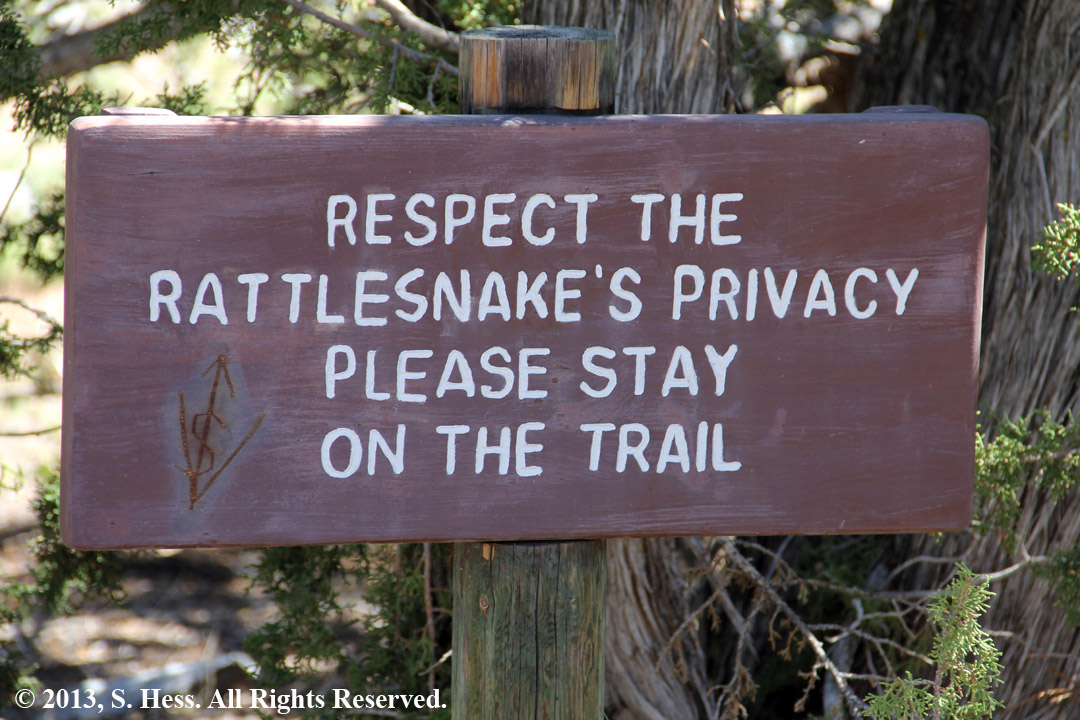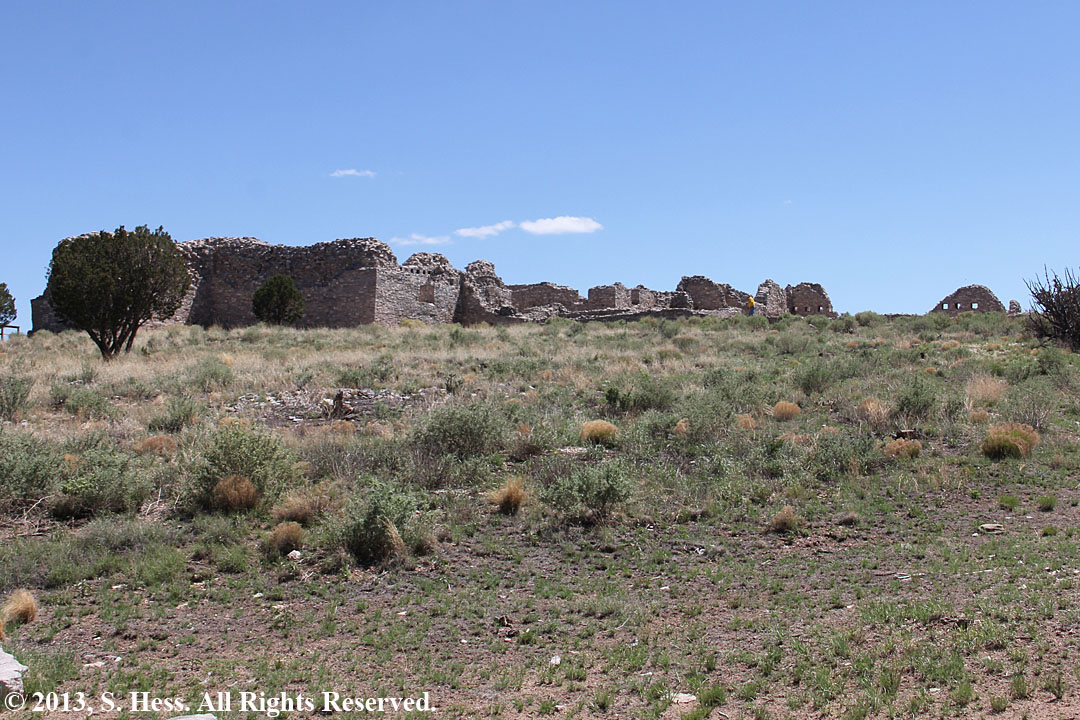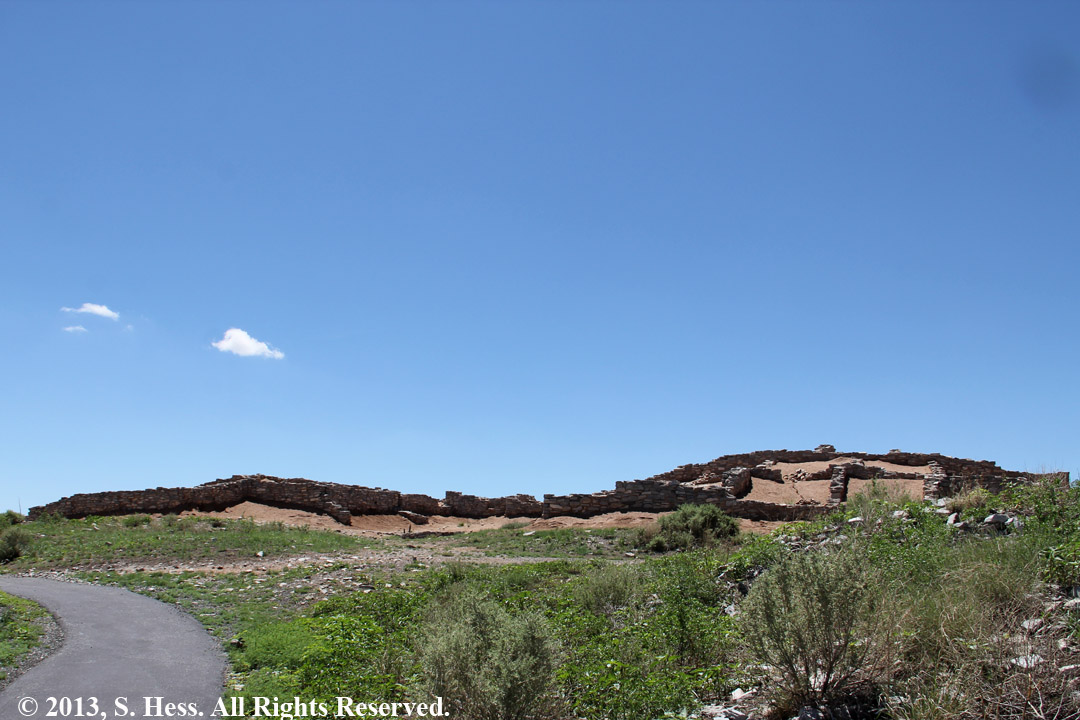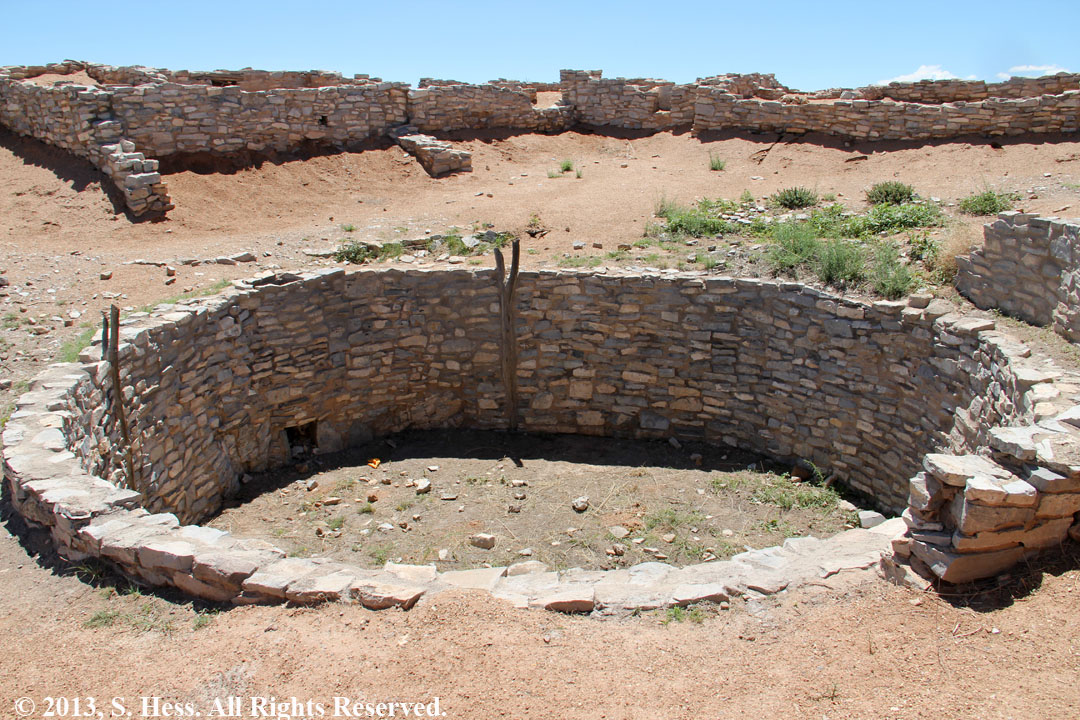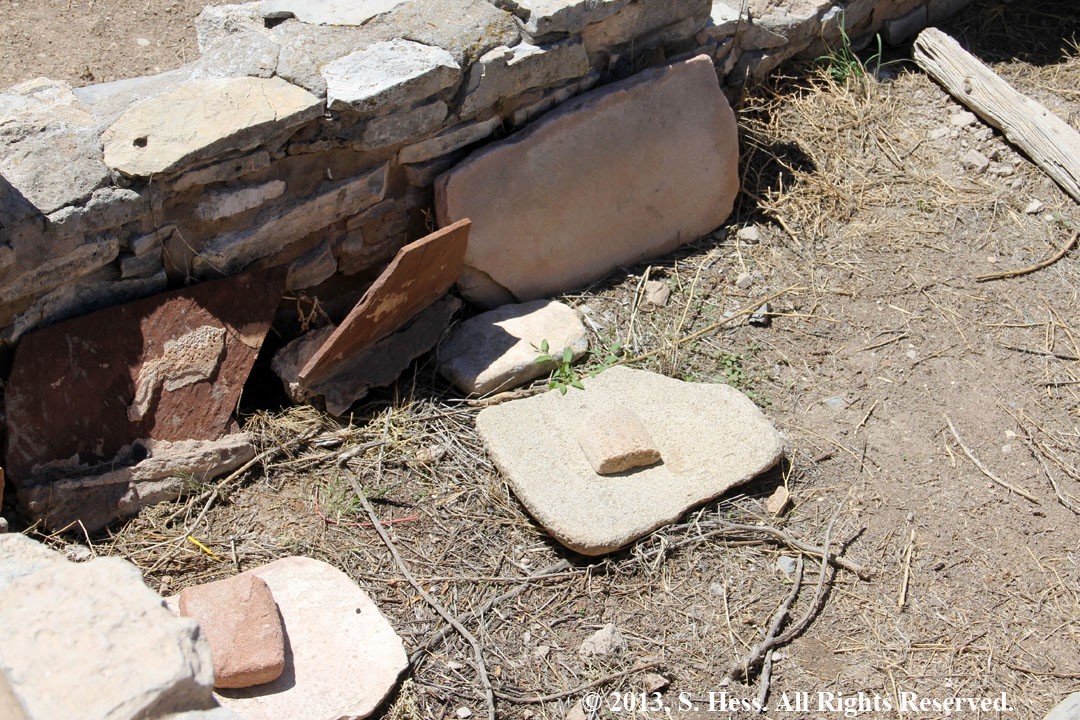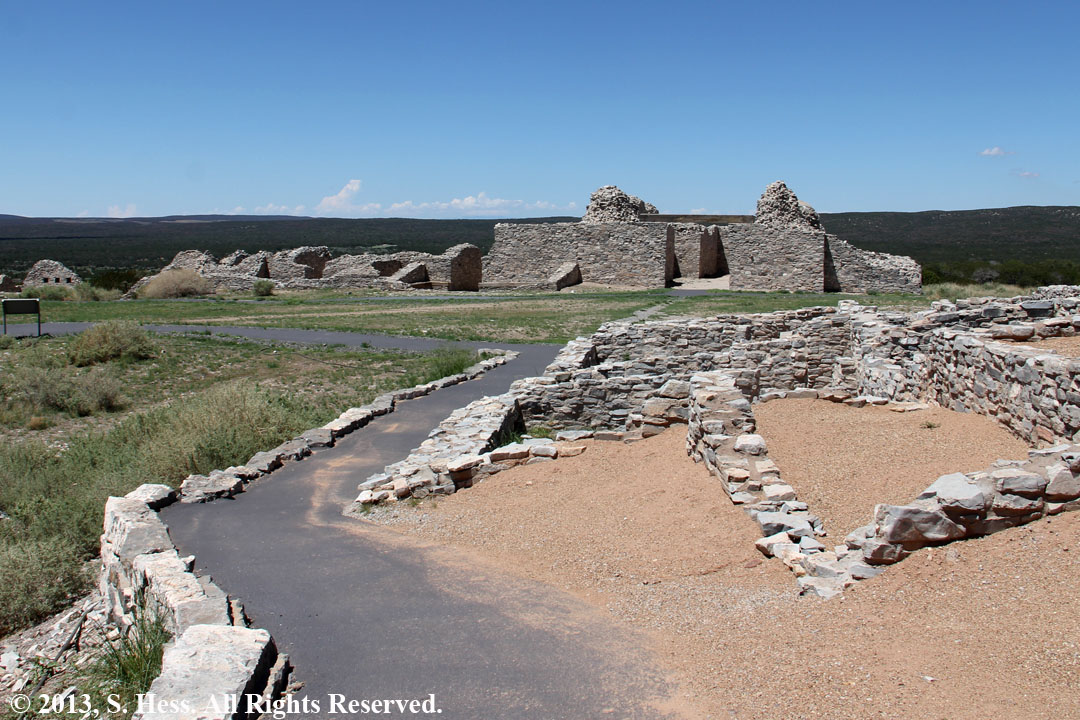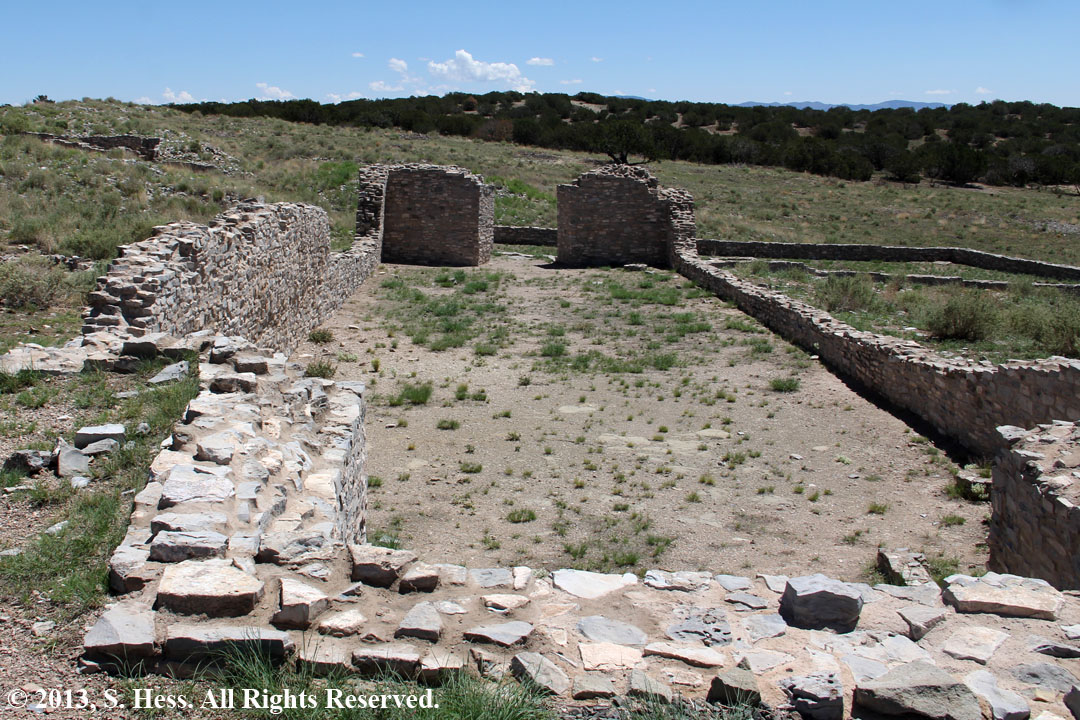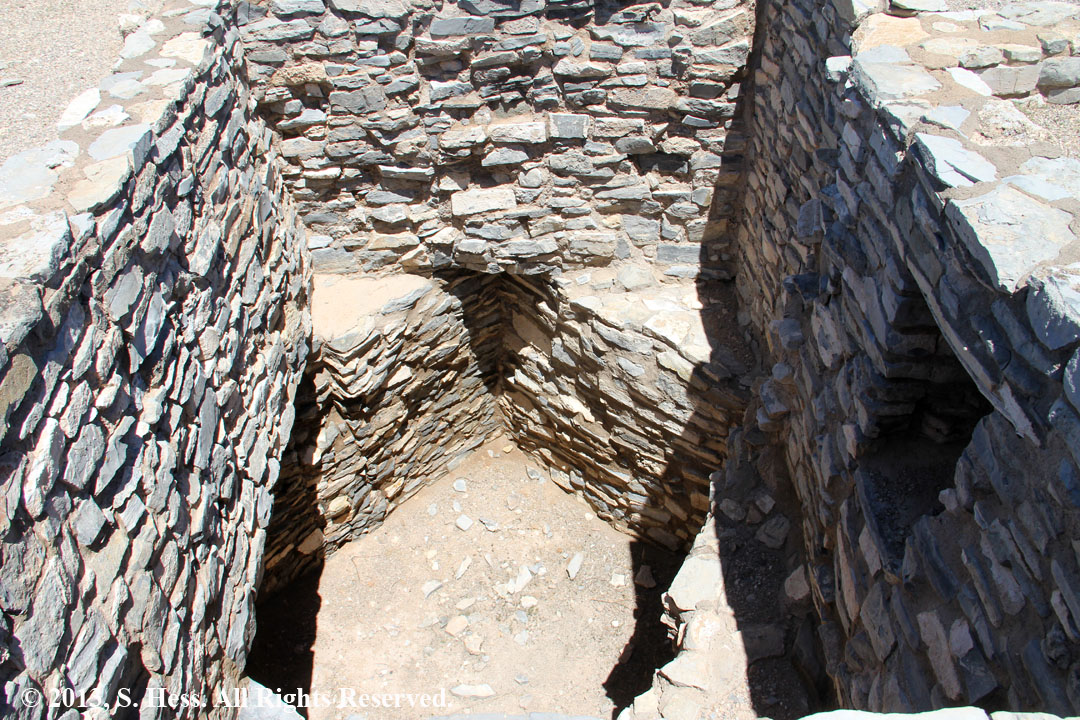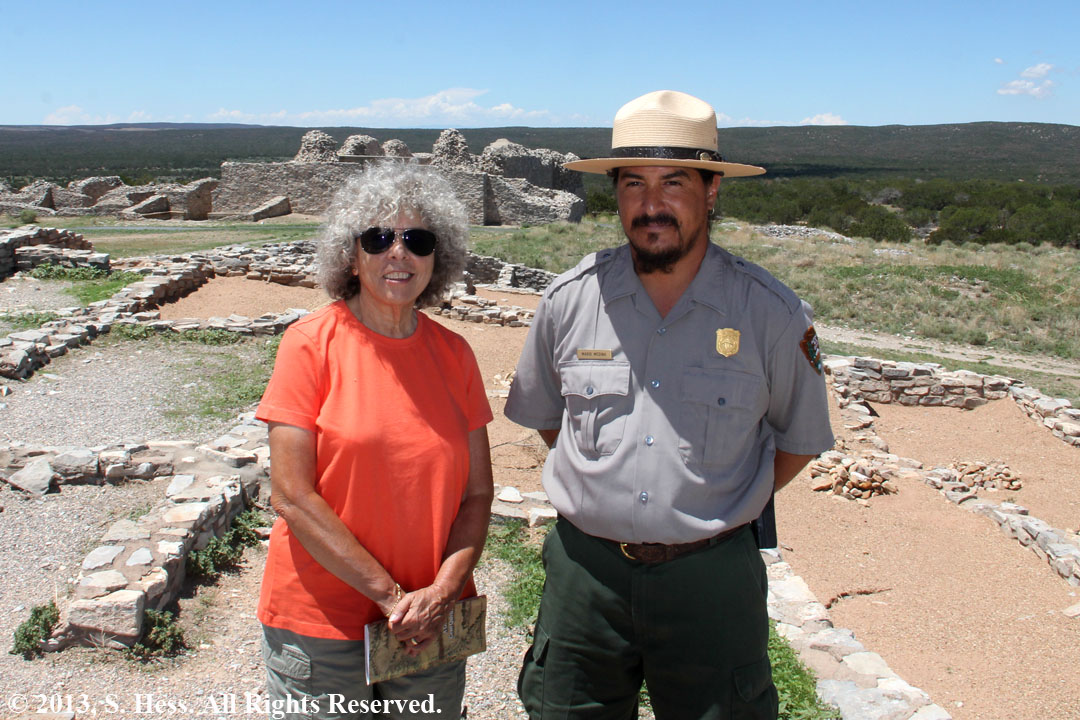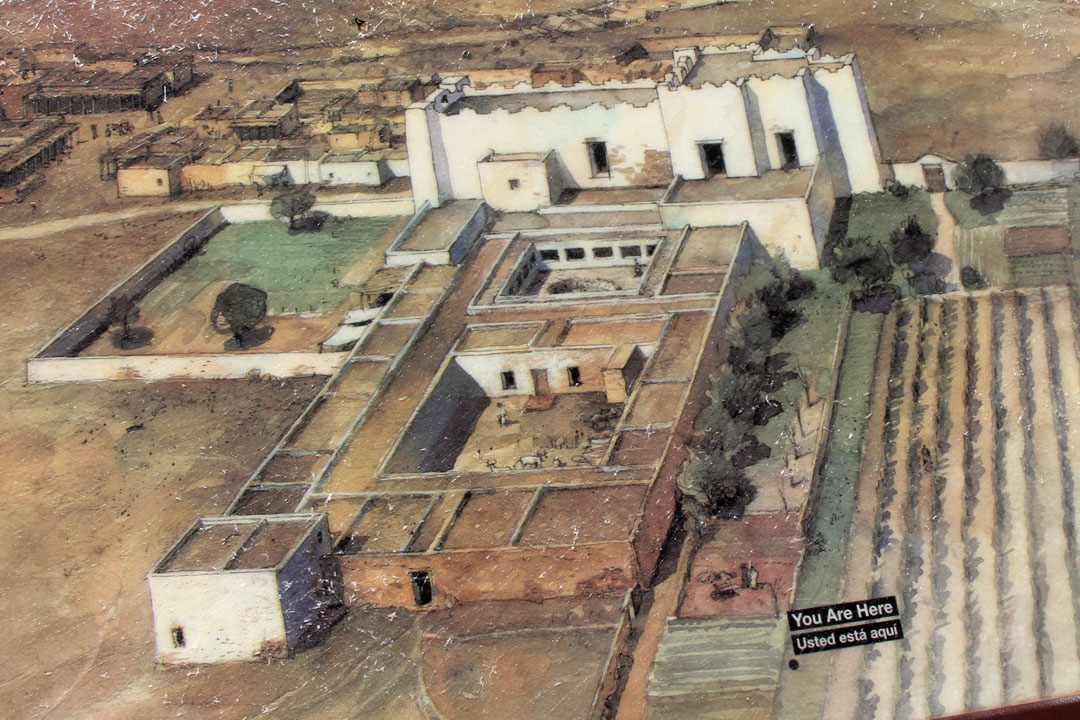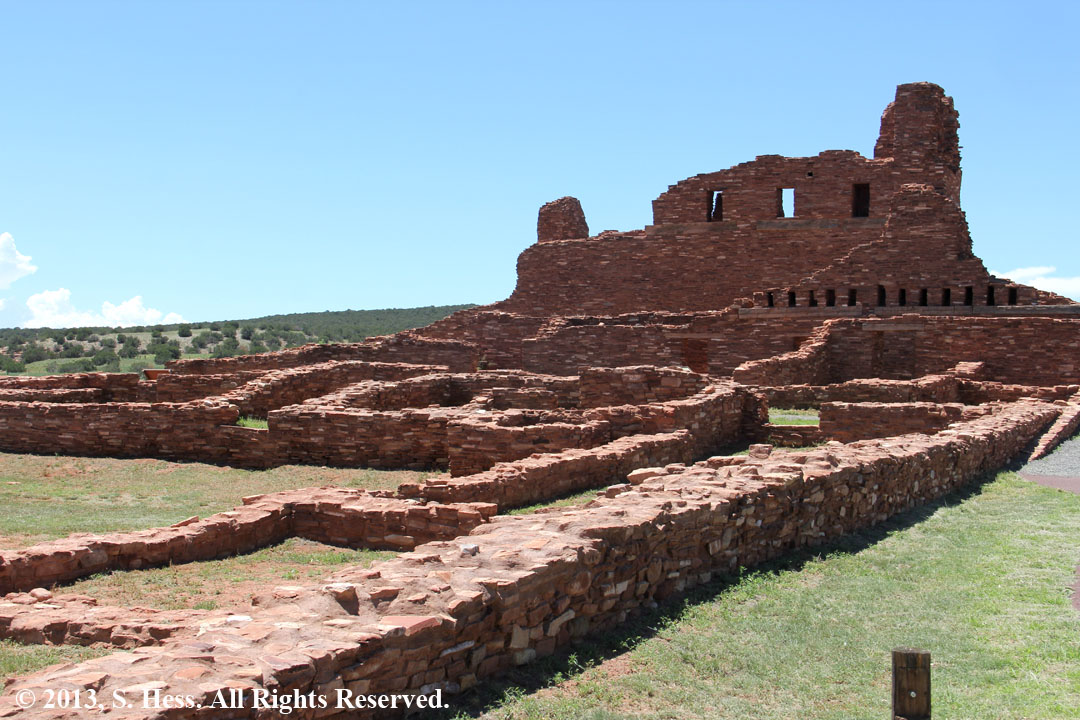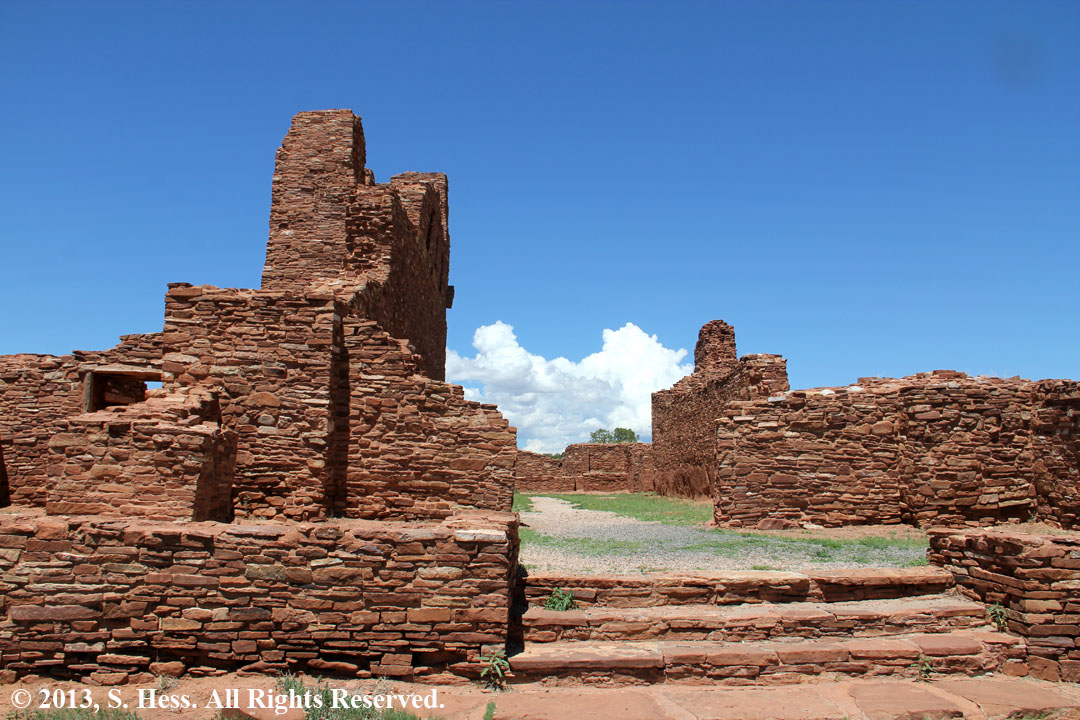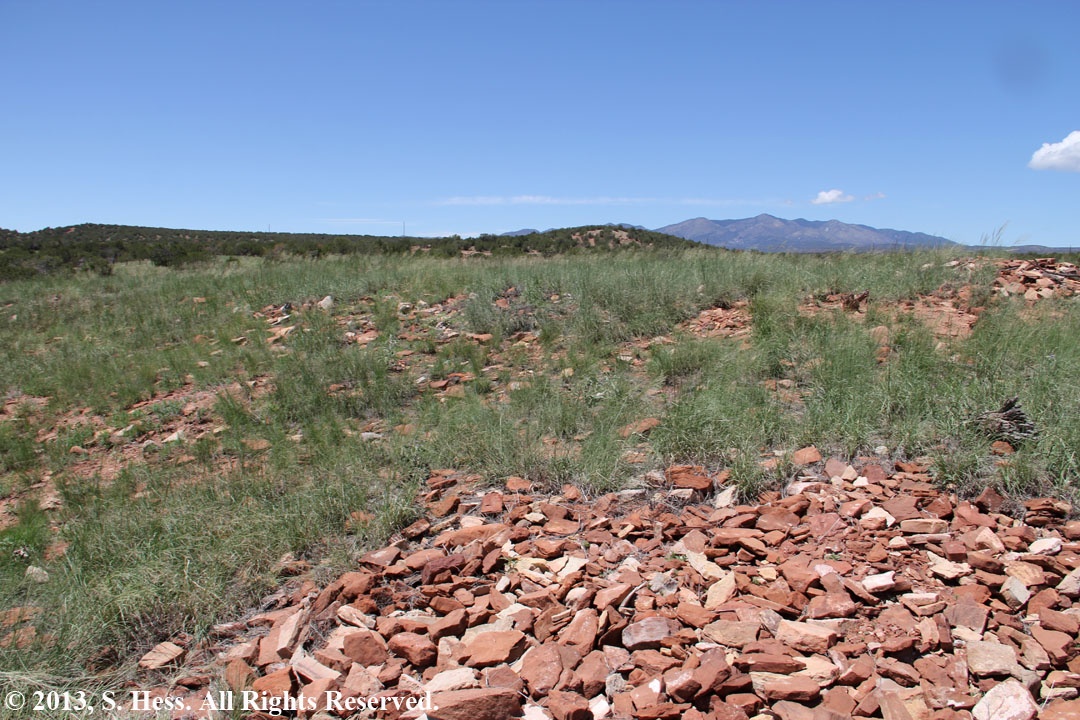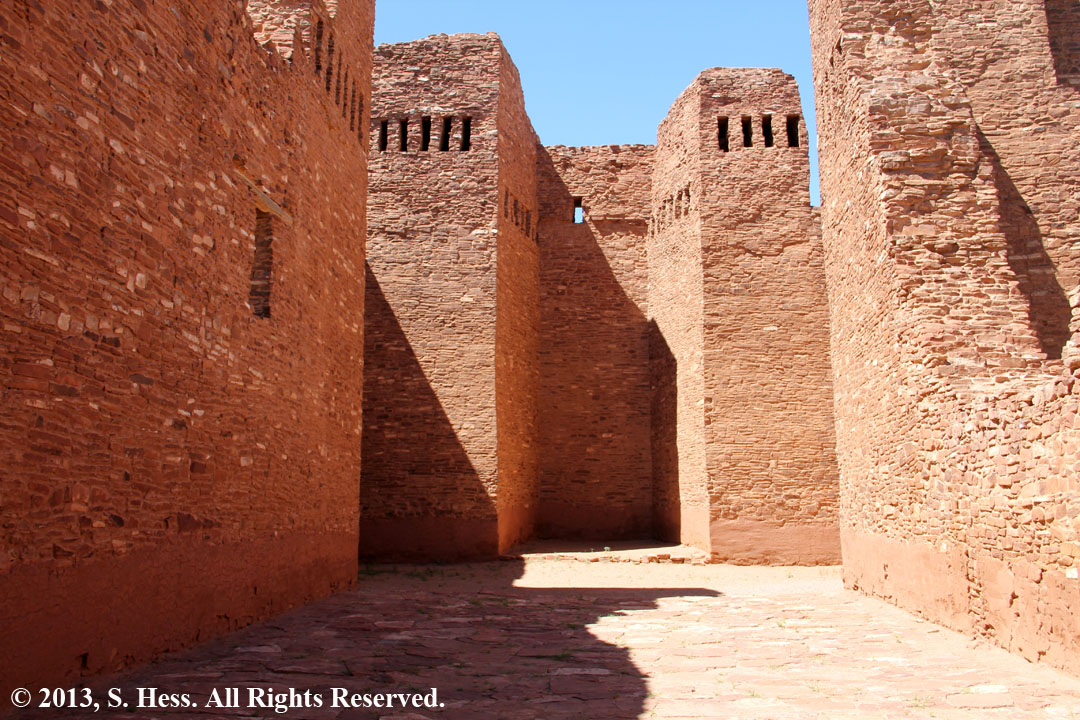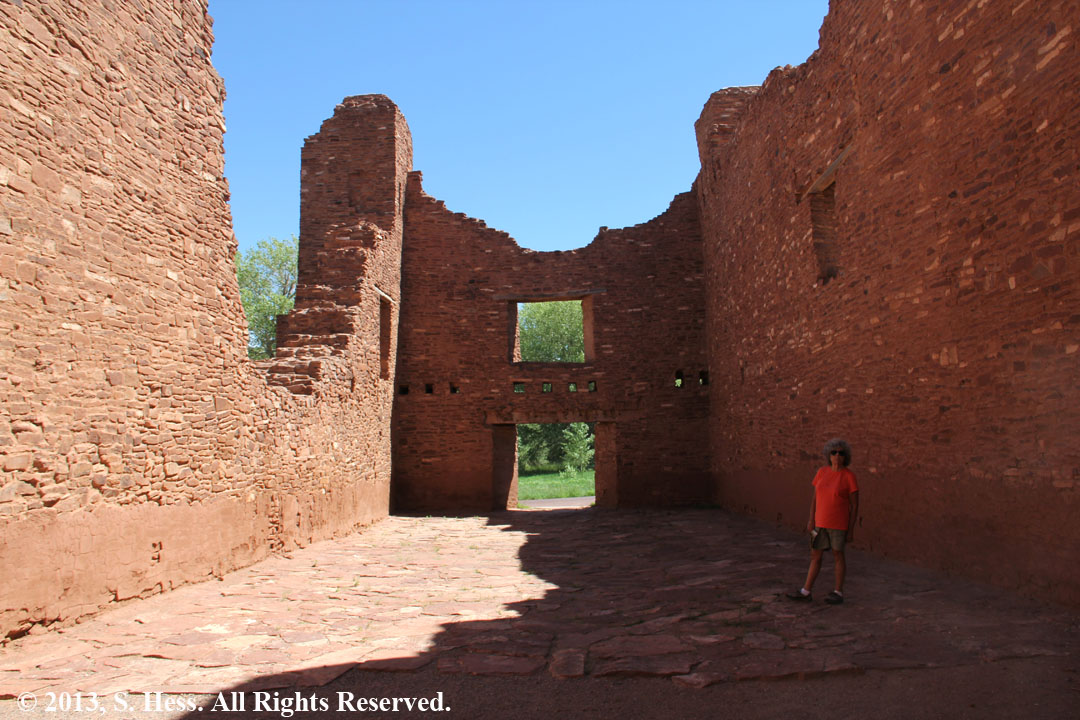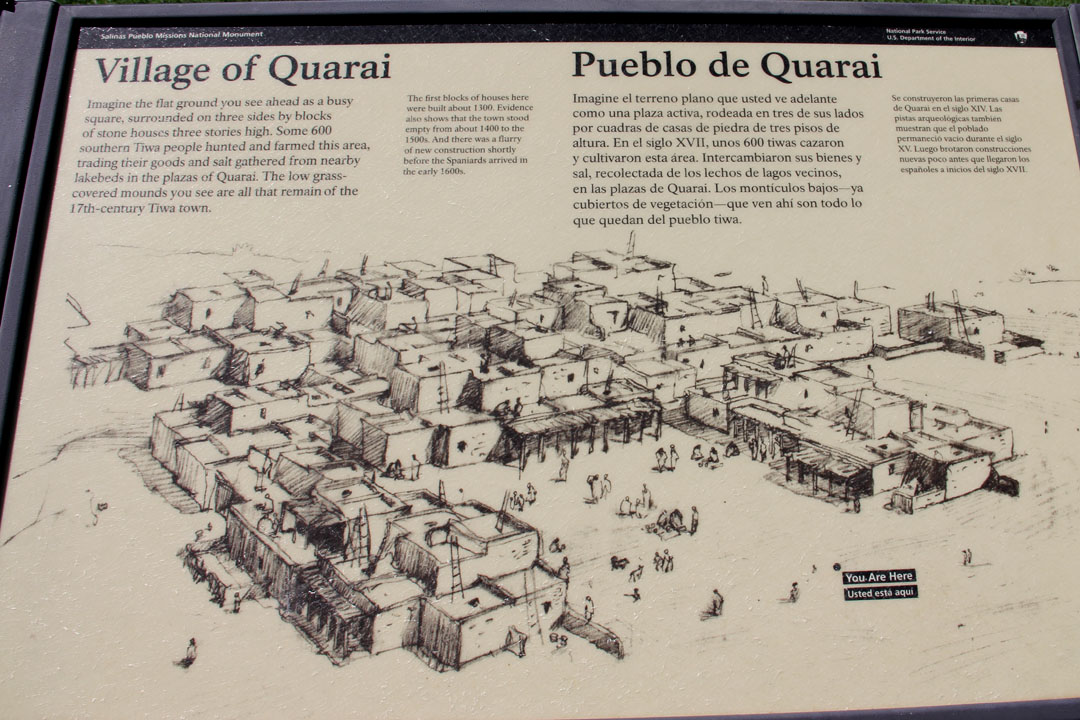
Summer 2013 - Southwest
Take Two
Albuquerque, NM
August 3, 2013
Area Map
Photographs and Commentary
Click on picture to enlarge
Salinas Pueblo Missions National Monument
Today we visited the Salinas Pueblo Missions located in the vicinity of Mountainair, NM. The National Monument consists of three pueblos that were abandoned in the 1670s. While some of the structures in the pueblos, most notably the churches, have been excavated and stabilized, most still lie under mounds of debris and soil.
Gran Quivira, also known as Las Humanas, the largest of the pueblos is located 26 miles south of Mountainair. We were fortunate to visit this pueblo first because it was here that we met Park Ranger, Mario Medina. Mario provided us with a lot of insight into how the pueblos were constructed and the relationship with the Spanish conquerors that led to the demise of this and other pueblos. Gran Quivira was located on major trade routes and their most important commodity was salt from salt lakes in the surrounding area. There is archeological evidence that they traded with tribes from the Plains , Mexico and Pacific coast. This pueblo has had the most excavated structures
The churches in Gran Quivira and the other pueblos were built with, as Ranger Medina put it, "volunteer labor." The Spanish priests worked hard at converting the natives away from their culture and in to the arms of the church. There is evidence that natives, while converting to the Christianity also maintained some of their old beliefs. One example of this is in the construction of the main entrance to the church. The walls of the church are about four feet thick and taper in from the interior to the exterior. If one follows the line of sight of the angles on both sides of the doorway, they point to the Northern (June) and Southern (December) solstice. The sol tic es were very important to the native life style and many of their structures were oriented to receive the sunlight at the time of the solstice.
Abo, nine miles west of Mountainair was our next stop. It has the most sophisticated of the churches in the pueblos. Only the church and a limited number of structures have been excavated. Abo was also a major trading center.
Quarai, nine miles north of Mountainair and our last stop, had what looked to us to be the largest of the mission churches. Besides the church, a mound adjacent to it as well as southernmost mound have been partially excavated.
First view of the ruins of Gran Quivira
This area was the pueblo's plaza
The kiva in the center of the plaza. It was covered by a roof made of timbers. Entrance was made by a ladder placed in a hole in the center of the roof. The hole also served as the chimney and fresh air was drawn through the ventilation shaft on the kiva's wall.
Right, details of the ventilation shaft of the kiva
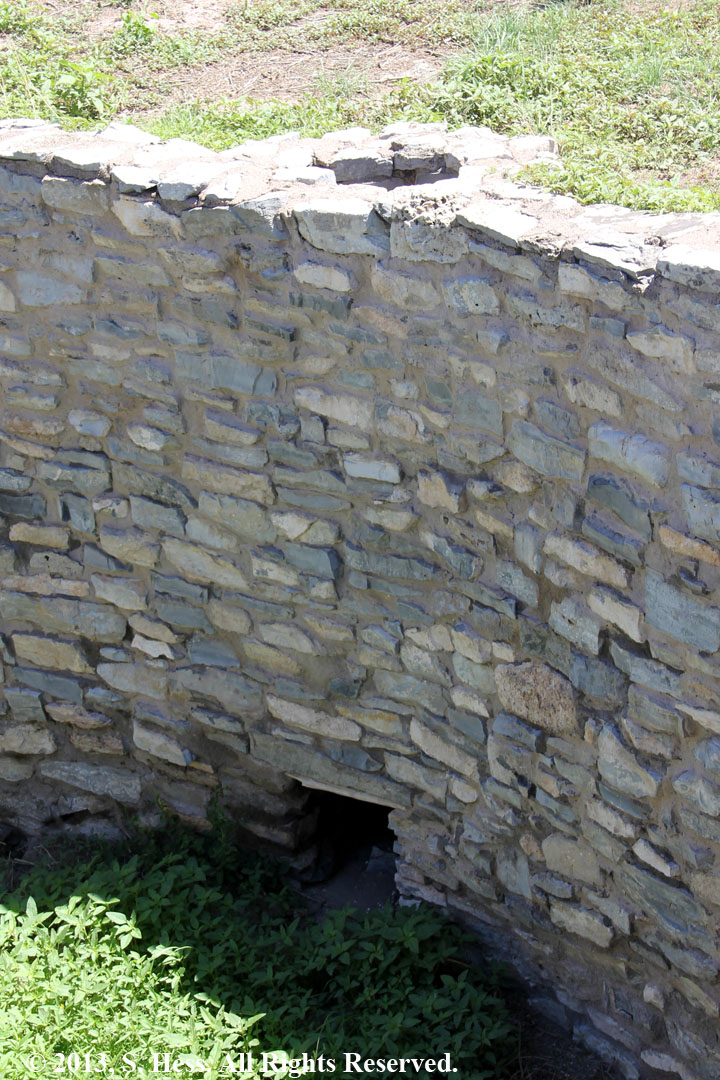
Corn grinding stones
The church as viewed from near the plaza.
Remains of the first church built in the pueblo
The first pueblo was a circular structure. The pueblo that stood here was rectangular and built on top of the old structure. The is a view through the new structure into the old one. The walls on the upper right hand and lower left hand corners are circular. The rooms were wedge shaped.
Susie and Park Ranger Mario Medina. The "new church" is in the background.
Abo
An artist rendition of the church at the Abo Pueblo
The view from the same perspective
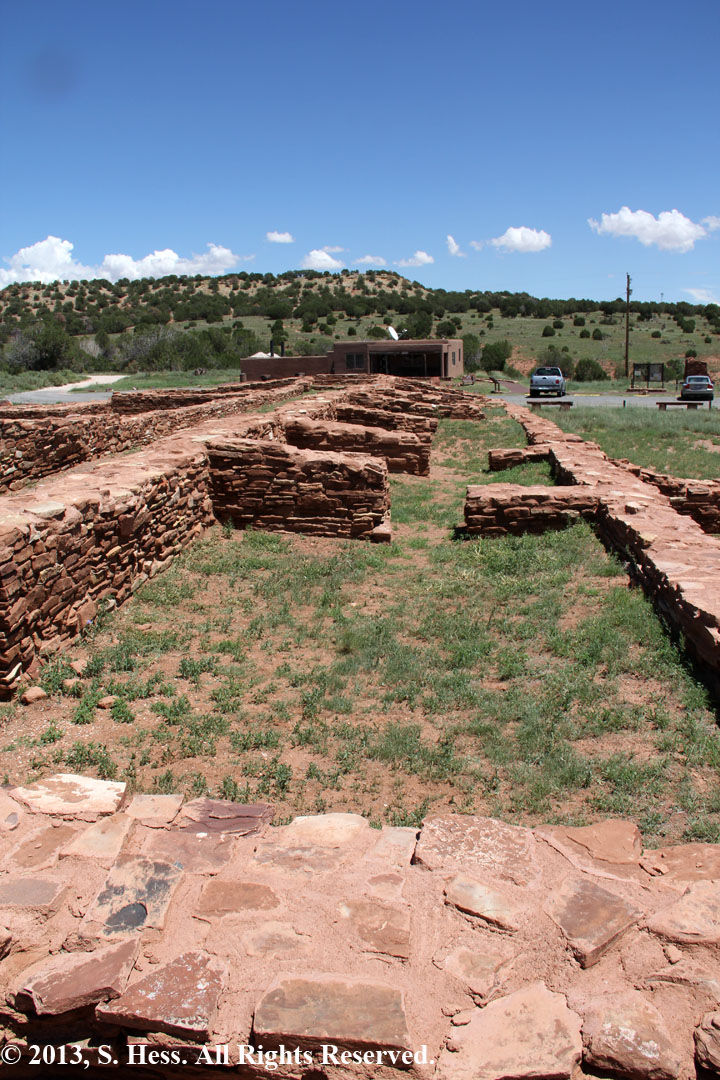
Entrance of the church
Left, friar's cells
Unexcavated mounds
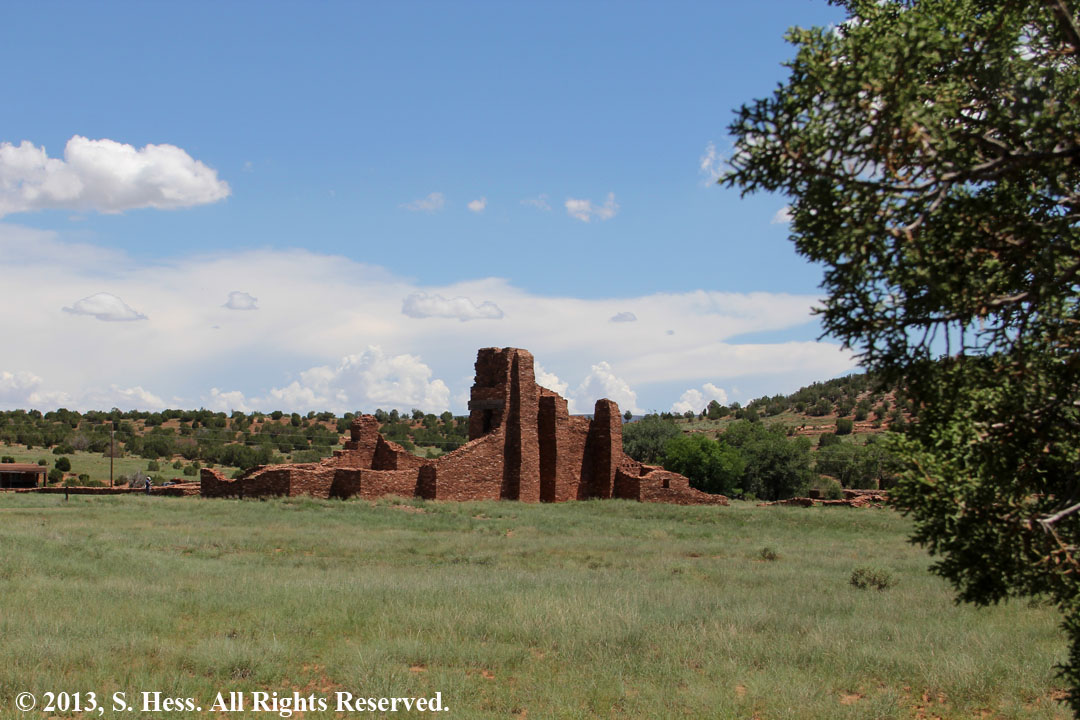
Quarai
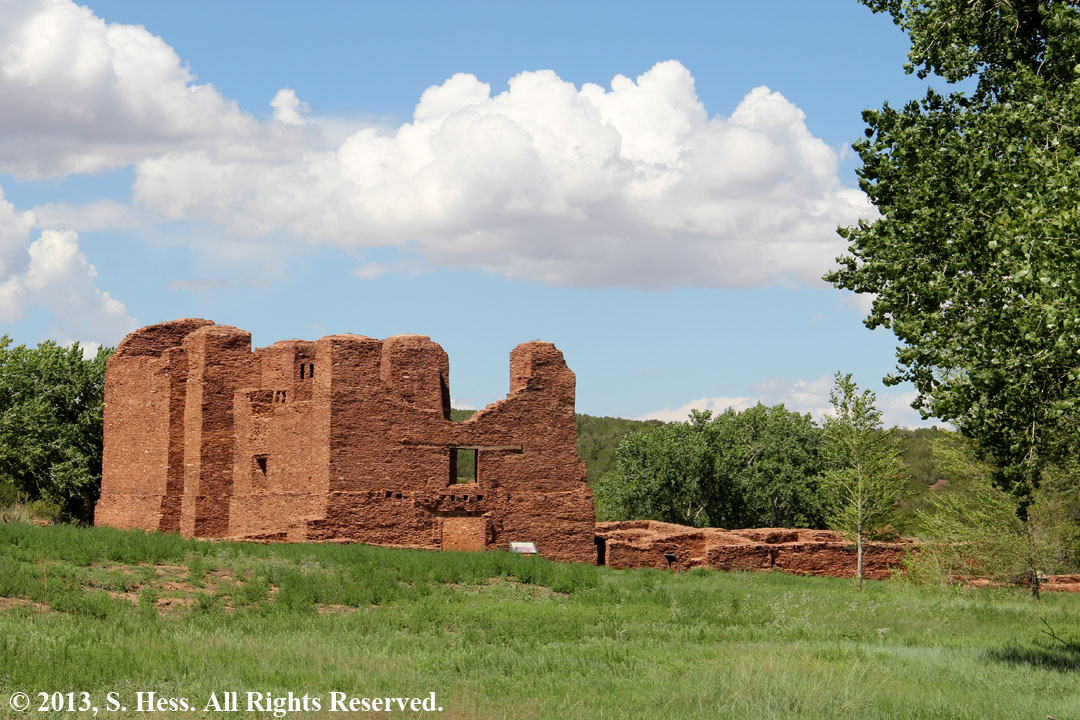
View of the interior from the entrance
View from the alter
Artist rendition of the Quarai Pueblo
View of the unexcavated mounds from the same perspective as the drawing, above
